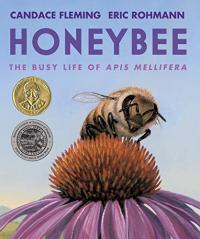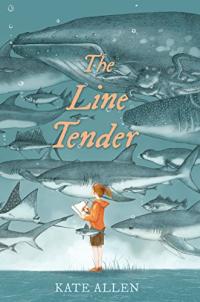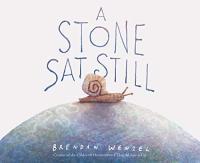
Staccato language is a call to action by children to do something about climate change. Black/white line illustrations are punctuated with green to provide emphasis and focus in this charming call to action. Actual young climate activists are presented at the end of the book.
Stand Up! Speak Up! A Story Inspired by the Climate Change Revolution

Oakheart the Brave, an old tree, introduces trees in fact and folklore. The anthropomorphized narrator’s text is generously illustrated for an inviting and informative look at trees.
The Secret Life of Trees

How a young Swedish girl’s concern for the environment became a global movement is presented here in straightforward language and illustrations that suggest Nordic art. Factual information and photographs complete this entry in the series.
Little People Big Dreams: Greta Thunberg

No words are needed as a tree is transformed into a paper bag and begins its own journey from lunch bag to seedling carrier. Shown through illustrations that are punctuated with small splashes of color several stories are presented without words to inspire telling and sharing — and maybe a bit of environmental awareness.
One Little Bag: An Amazing Journey

Few words are needed as a small penguin is separated from his group on an ice floe but soon delights in his changing surroundings. After traveling around the globe, the penguin returns home. Expressive illustration presents changing scenery and changing emotions.
Bye, Penguin

Opening in the summer of 1847, this story follows an Ojibwe family through four seasons; it focuses on young Omakayas, who turns “eight winters old” during the course of the novel. In nearly step-by-step details, the story describes how they build a summer home out of birchbark, gather with extended family to harvest rice in the autumn, treat an attack of smallpox during the winter, and make maple syrup in the spring to stock their own larder and to sell to others.
The Birchbark House

Based on a true story, The Water Walker, shares the story of Josephine Mandamin, a woman who was inspired by a prophecy to protect water. The book tracks her activism around water protection and the group of Water Walkers that she formed who join her on her many walks across North America. This is a dual-language edition in English and Anishinaabemowin.
Nibi Emosaawdang / The Water Walker

To the Gitxsan people of northwestern British Columbia, the grizzly is an integral part of the natural landscape. They share the land and forests the Skeena River runs through, as well as the sockeye salmon within it. The Grizzly Mother explores how an ecosystem’s animals, people, and seasons are all intertwined.
The Grizzly Mother

A girl and her grandfather contemplate circles, both physical and metaphorical, in this thought-provoking tale of family, community, and interconnection. Grandpa says circles are all around us. He points to the rainbow that rises high in the sky after a thundercloud has come. “Can you see? That’s only half of the circle. That rest of it is down below, in the earth.” They share and create family traditions in this exploration of the cycles of life and nature.
All Around Us

From the Atmosdragon to the Oblivionped, the Earth is in grave danger. Science and folkloric creature are creatively integrated in this call to action. Attractive and accessible, “monster cards” add a game-like quality as well as a way to compare impact. Source notes and index are included.
Planet SOS

The prophecy has come true: the black snake has come to terrorize the community. It hurts the source of life, water. This call to action is presented by in word and image by an author and illustrator, Ojibwe and Tlingit/Haida respectively, based on the Dakota Pipeline access protest in Standing Rock reservation. Lush, flowing illustrations and a narration by a young Native girl make a compelling case for protection, encouraging readers to sign a water protector pledge.
We Are Water Protectors

There are two sides to everything, including animals. Creatures like black cats, vampire bats, Tasmanian devils, and a host of other animals often have bad reputations — but there is another side! Explore both in an an open format with humorous illustrations. A glossary is included.
The Not Bad Animals

Earth is presented as a large brown-skinned girl who awakens “from a winter nap” listens to farmers tapping the earth and birds singing. She guides a baby zebra, tends prairies, and more until she sleeps, “To fly up again in the warm bright sun of spring!” Clever use of flaps and die-cuts hold surprises and delights in the richly colored, dynamic illustrations and lyrical language, creating a stunning appreciation of Earth.
My Friend Earth

Apis Mellifera, the worker honeybee, does a lot during its short life. Poetic language and highly detailed illustrations provide an up-close look at the bee, its hive, and expansive travels, cleverly seen in a double gatefold. Backmatter and further reading conclude this stunning book.
Honeybee: The Busy Life of Apis Mellifera

A father gently awakens his child to begin their day outdoors. As they leave home, the scenery changes, becoming more tranquil and natural where they begin their hike. At the end of the day, they head home. The joy of an outdoor afternoon and the pleasure of an outing with dad are elegantly conveyed with few words.
Hike

Look! A line of paw prints in the snow. Follow the tracks to see the rare and majestic snow leopard and visit her secret world. Join a zoologist in the Himalayan mountains as he searches for the elusive creature. With her pale gold and silver-gray coat painted with black rosettes, she blends so well into the boulders, it’s no wonder she’s thought of as a ghost of the mountains. Written by a zoologist and interwoven with fascinating facts, this look at a fascinating animal includes an end note suggesting resources to explore.
Snow Leopard: Ghost of the Mountains

Alone in the snowy woods with his dog, a boy discovers the wonder of winter trees, one at a time, in a big, quiet space. On every double-page spread, four lines of simple verse and bright linoleum block prints decorated with watercolor and collage capture the stark outlines and the details of what he sees, hears, and touches (“Crunch! Our footsteps make the only sound”). The botanical facts are part of the wonder (“Trees that once had leaves are bare”). (Booklist)
Winter Trees

There is great drama to be found on the Serengeti witnessed by scientists. Meet some of those who study the migration of wildebeest in Tanzania. Observe the animals that share the land with the wildebeest. The author’s insightful, illuminating, and highly readable narration in a handsome format with stunning photographs is also a plea for humankind to respect other mammals.
The Magnificent Migration: On Safari with Africa’s Last Great Herds

Twelve-year-old Lucy lives with her father in Rockport, Massachusetts. Her mother, a marine biologist, died several years earlier. Lucy and her best friend and neighbor with a passion for science are making a field guide about marine animals: Fred writes; Lucy draws. Loss, grief, and healing are deftly handled in this memorable, striking novel in which community, art, science, and love intersect.
The Line Tender

From farming to feelings, from teamwork to community, “…it turns out that the respect for animals that is so important in indigenous traditions makes very good sense.” In other words, humans and animals share a great deal, making all creatures “humanimals” — a case presented in clear illustration and straightforward text. The scientists who study animals and their behavior are included, as are additional resources.
Humanimal: Incredible Ways Animals Are Just Like Us

Never heard of the black and rufous sengi? How about Brainville’s beaked whale? Lions, and tigers and giraffes are all familiar, but in this humorously illustrated and informative volume you’ll find out about even more less-well-known animals. As in the first book in the series, Lesser Spotted Animals (opens in a new window), readers meet unfamiliar animals, where they are found, what they eat, and if they are thriving. After all, “how can we help something survive if we don’t even know it exists?”
Even More Lesser Spotted Animals

Who said that there isn’t fact in fun? They haven’t met the heroes in this highly, hysterically illustrated space adventure. AlphaWolf, SmartHawk, LaserShark, and StinkBug explore the universe in their Thomas Jefferson Nose Rocket looking for a Goldilocks planet but find danger instead. Earth, the narrator, also provides information about climate change in this wild and witty adventure.
AstroNuts Mission One: The Plant Planet

Join the Cherokee people as they celebrate each season of the year and special occasions, as well as the daily activities for which gratitude is expressed. Bold hues and flat forms distinguish the naïve illustrations. Cherokee words, based on Sequoyah’s syllabary (written symbols for syllables), are sprinkled throughout. Additional information concludes this handsome and unique glimpse of contemporary Native life written by a Cherokee poet.
We Are Grateful: Otsaliheliga

How can one thing be smooth and rough, a feel and a smell, and red, green, and purple, too? Does the stone that “sat still…as it was where it was in the world” change or is it how different animals see it? Poetic language and softly lined and colored illustration combine to present a book about change and constancy, sure to generate discussion.
